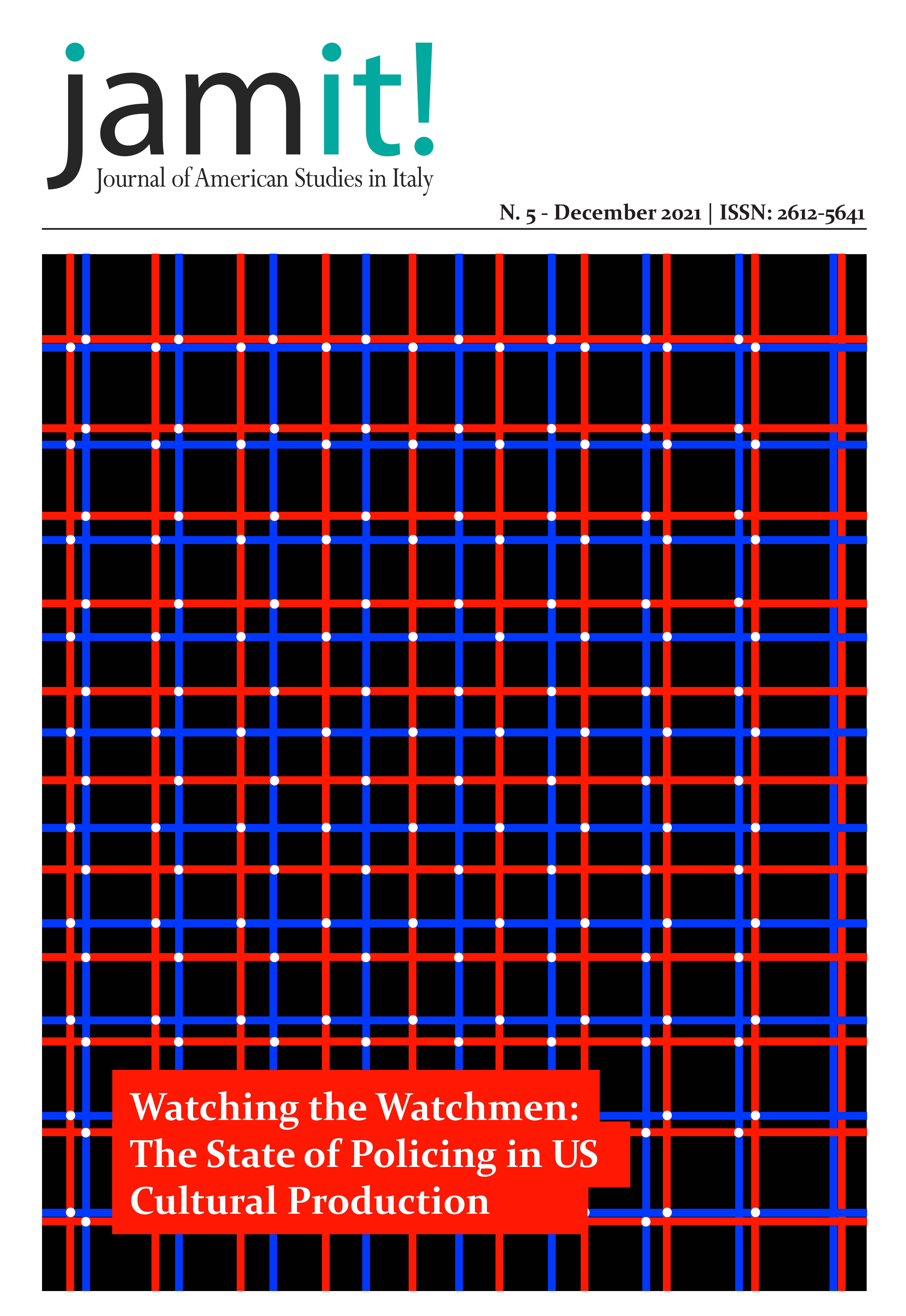No. 5 (2021): “Watching the Watchmen:” The State of Policing in US Cultural Production

US obsession with policing can be traced back as far as John Winthrop’s sermon “A Model of Christian Charity” (climaxed in the noted “the eyes of all people are on us”), delivered in 1630 on board of the Arbella. In one of white America’s foundational texts, the “eyes of all people” stand as an early figuration of panoptical undercurrents in the United States, whereby a professedly metaphysical yet very concrete control is enforced to safeguard social and ethical order. Canonical US literature, from Nathaniel Hawthorne’s The Scarlet Letter to Ralph Ellison’s Invisible Man also reminds us that order, even when not deferred to the State, has been violently enforced through coercion, stigma, or segregation throughout the history of the nation. Echoing the seminal figure of Esther Prynne, narratives produced by authors as diverse as W. E. B. Du Bois, Charlotte Perkins Gilman and, more recently, Sandra Cisneros, Louise Erdrich, and Ta-Nehisi Coates, are figurations and proofs of the United States’ leviathan policing apparatus and its employment in regulating non-conforming subjects in the name of a perfectly-engineered City Upon a Hill and the capitalistic permutation of its transcendental concept of social order.
The state systematically marshals the bodies of its citizens through practices such as biopower and necropolitics; in doing so, it also shapes and channels our understanding of race, gender, sexuality, and identity. This is especially evident in the US prison system, with its world-record constellation of institutions that actively re-design the institutional contours of national social inequality while also standing as a demonstration of how unfettered capitalism (even in its neoliberalist guise) predates on minoritarian and oppressed subjects for its reproduction. The recent wave of events across the United States and growing appeals to states of exception have further called attention to systematic police brutality and its role in stabilizing authority as part of the state apparatus. Across the nation, citizens are fighting back against what Herbert Marcuse has called “surplus-repression,” that is, “the restrictions necessitated by social domination,” (1955, 35) that characterize ideology and praxis of advanced industrial societies up to their contemporary neoliberal incarnations. If racialized violence that has been perpetrated since the Federalist Era through both institutional and private forms of racial policing reverberates in the murders of Breonna Taylor, George Floyd, and Ahmaud Arbery; the protesting, marching, and rioting that ensued – culminated in the Defund the Police movement and in the deployment of federal troops to contain protests and protestors – point to the desire of new forms of governance (and self-governance) from the opposite poles of the political spectrum: a counter-apparatus from below, aiming to citizens empowerment and liberation, on the one hand, and what we may call a “neo-conservative revolution,” aimed at preserving old white patriarchal structures.
The aim of this Special Issue of JAm It! (Journal of American Studies in Italy) is not only to discuss representations and histories of police and policing across multiple systems but also to analyze (and produce) counter-imaginaries, modes of care that aim at seeing, rather than watching, citizens and bodies. At this sensitive moment in American history, when national understandings of, as Michel Foucault would have it, “disciplin[ing] and punish[ing]” are being especially questioned, we look for contributions that, through the analysis of representations and/or cultural artifacts, frame policing in its fluid connections with the way in which US culture and counterculture have imagined and produced systems of control.




